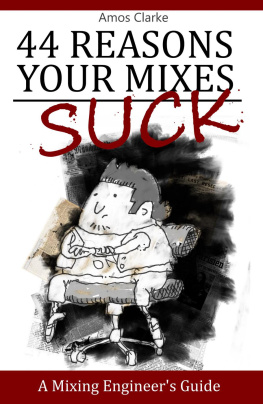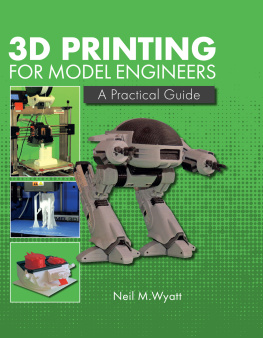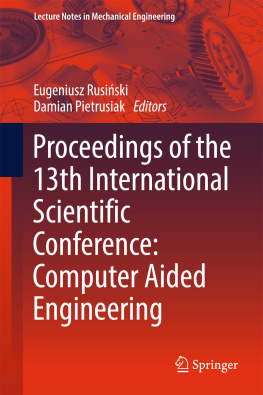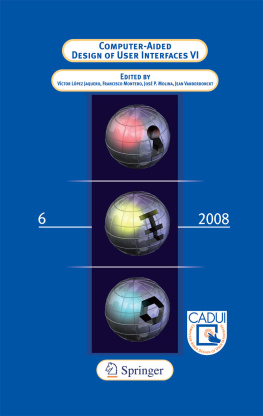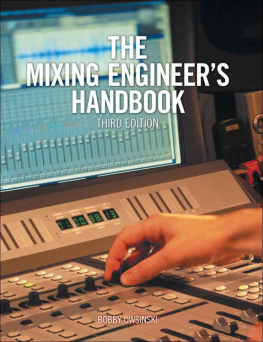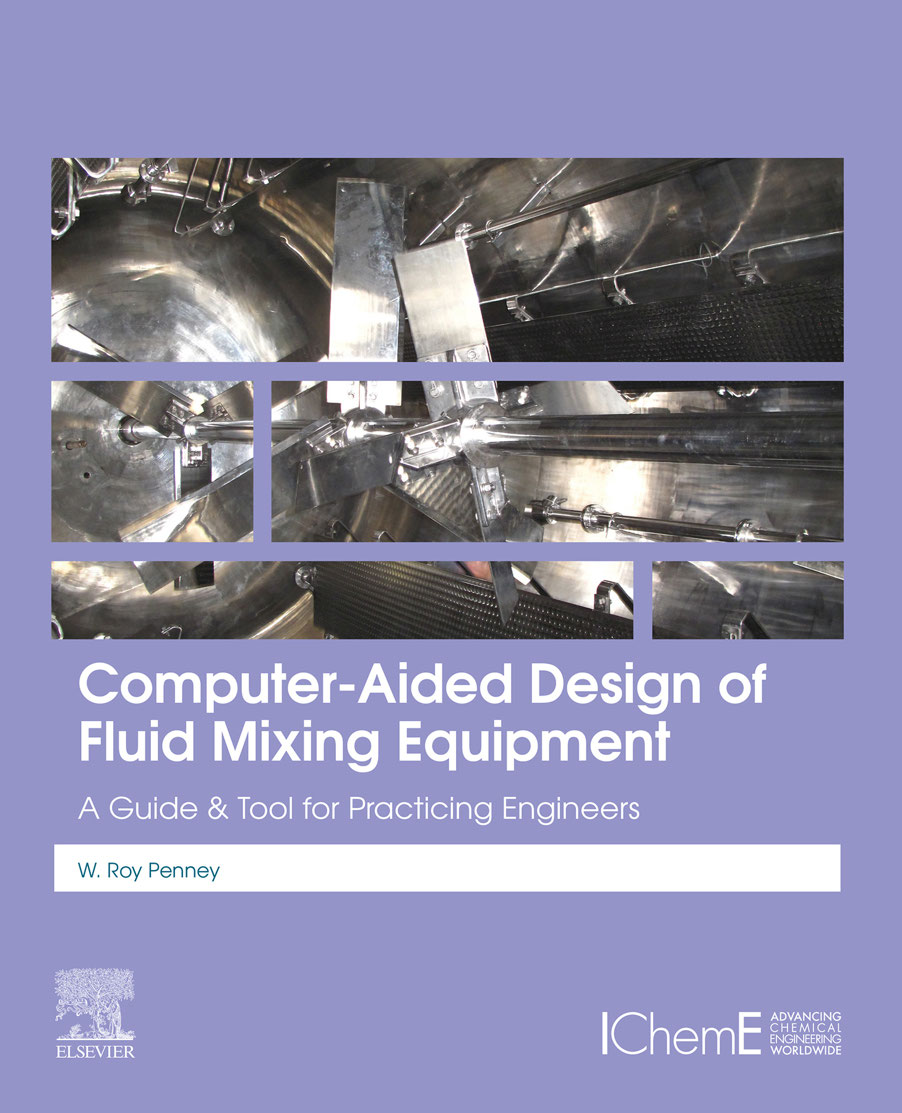Computer-Aided Design of Fluid Mixing Equipment
A Guide and Tool for Practicing Engineers
W. Roy Penney
Department of Chemical Engineering, University of Arkansas, Fayetteville, AR

Copyright
Elsevier
Radarweg 29, PO Box 211, 1000 AE Amsterdam, Netherlands
The Boulevard, Langford Lane, Kidlington, Oxford OX5 1GB, United Kingdom
Hampshire Street, 5th Floor, Cambridge, MA 02139, United States
Copyright 2021 Elsevier Inc. All rights reserved.
No part of this publication may be reproduced or transmitted in any form or by any means, electronic or mechanical, including photocopying, recording, or any information storage and retrieval system, without permission in writing from the publisher. Details on how to seek permission, further information about the Publisher's permissions policies and our arrangements with organizations such as the Copyright Clearance Center and the Copyright Licensing Agency, can be found at our website:
This book and the individual contributions contained in it are protected under copyright by the Publisher (other than as may be noted herein).
Notices
Knowledge and best practice in this field are constantly changing. As new research and experience broaden our understanding, changes in research methods, professional practices, or medical treatment may become necessary.
Practitioners and researchers must always rely on their own experience and knowledge in evaluating and using any information, methods, compounds, or experiments described herein. In using such information or methods they should be mindful of their own safety and the safety of others, including parties for whom they have a professional responsibility.
To the fullest extent of the law, neither the Publisher nor the authors, contributors, or editors, assume any liability for any injury and/or damage to persons or property as a matter of products liability, negligence or otherwise, or from any use or operation of any methods, products, instructions, or ideas contained in the material herein.
British Library Cataloguing-in-Publication Data
A catalogue record for this book is available from the British Library
Library of Congress Cataloging-in-Publication Data
A catalog record for this book is available from the Library of Congress
ISBN: 978-0-12-818975-7
For Information on all Elsevier publications visit our website at https://www.elsevier.com/books-and-journals
Publisher: Susan Dennis
Acquisitions Editor: Anita Koch
Editorial Project Manager: Naomi Robertson
Production Project Manager: Sruthi Satheesh
Cover Designer: Matthew Limbert
Typeset by Aptara, New Delhi, India

Table of Contents
Cover Image
Title Page
Copyright
Table of Contents
Chapter Introduction
Abstract
Contents
Best Use of Methods Offered Here
Other Resources Consultants, Vendors, Couses and Videos
Training Resources Available for Fluid Mixing Technology
Appendix 1.1: Fluid mixing courses
Appendix 1.2: Videos YouTube and Industrial Mixing Handbooks
YouTube Videos
Acknowledgements
References
Chapter Impeller fundamentals
Abstract
Contents
Nomenclature
Dimensionless Parameters
Flow and Shear
Power-producing Flow and Power-producing Shear
Example Problem 2.1. Viscous Syrup Bending with a Side Entering Agitator in a kgal Tank
Example Problem 2.2. Viscous Syrup Blending with Propeller Pump in a kgal Tank
References
Chapter Equipment selection
Abstract
Contents
Nomenclature
Introduction
Economy of Scale is Increasing the Size and Complexity of Agitators
A Historical Perspective
Example Problem 3.1. Making Lye Soap in the Laboratory and in gal (200 L) Drums
Example Problem 3.2. Selecting a Commercially Available Agitator
Example Problem 3.3. Impeller Selection/Power Requirements
Agitator Vendors: Websites and Videos
References
Chapter Impeller power and pumping
Abstract
Contents
Nomenclature
Impeller Power Requirements
Impeller Pumping Correlations
Example Problem 4.1. P, Q, 6BD in m Fully Baffled Vessel
Example Problem 4.2. Rework of Example 4.1 with increased so Re =
Example Problem 4.3. Pumping Rate: HE-3 Impeller Compared to the Performance of the 6BD of Example 4.2
Example Problem 4.4. HE-3 Impeller Compared to the Performance of the 6BD of Example 4.3 at the Same N
References
Chapter Vortex depth
Abstract
Contents
Nomenclature
Introduction
Unbaffled Vessels
Anchor Impeller in Unbaffled Vessel
Example Problem 5.1. Vortex Depth in an Unbaffled Vessel with an Anchor Agitator
Partially Baffled Vessels
Example Problem 5.2. Prediction of the Vortex Depth for the Experimental Conditions Utilized for the Data Presented in Fig. 5.3
Power Decrease Due to Partial Baffling
Selection of Optimum Geometry to Maximize Vortex Depth at Minimum Impeller Power
References
Chapter Tank blending
Abstract
Contents
Nomenclature
Experimental Methods
Correlation for Predicting Blending Uniformity
Blending in the Transition and Laminar Flow Regime 100)
Blend Time for Multiple Impellers
EXAMPLE 6.1. BATCH BLENDING WITH AN HE-3 IMPELLER
Example Problem 6.2. BLENDING WITH A HELICAL RIBBON IMPELLER
References
Chapter Pipeline mixing
Abstract
Contents
Nomenclature
Introduction
Example Problem 7.1. Solute/Solvent Dispersion--Example Problem 7-3 [3, p. 452-454]
Example Problem 7.2. COV for a Square Duct
Example Problem 7.3. COV for a Kenics HEM Static Mixer
Example Problem 7.4. Mixing Air and Ammonia Feeding a Nitric Acid Plant
References
Chapter Heat transfer
Abstract
Contents
Nomenclature
About this Chapter
Introduction
Options for Heat Transfer Surfaces
Example Problem 8.1. Overall Coefficient and Heat-up Time for a Water Batch
Example Problem 8.2. Overall Coefficient and Heat-up Time for a Water Batch/Coil
Example Problem 8.3. Helical Ribbon h and Heat-up Time for a Viscous Batch
Example ProblemS 8.4a8.4d
References
Chapter Solids suspension
Abstract
Contents
Nomenclature
Introduction
Homework Problem 9.2: Solve Example Problem 10-3.4.3 from Brown et al. [3, p. 383]
Homework Problem 9.3: Check the Experimental Results of Chowdhury's [2, p. 171] Run No.
References
Chapter Dissolving solids
Abstract
Contents


